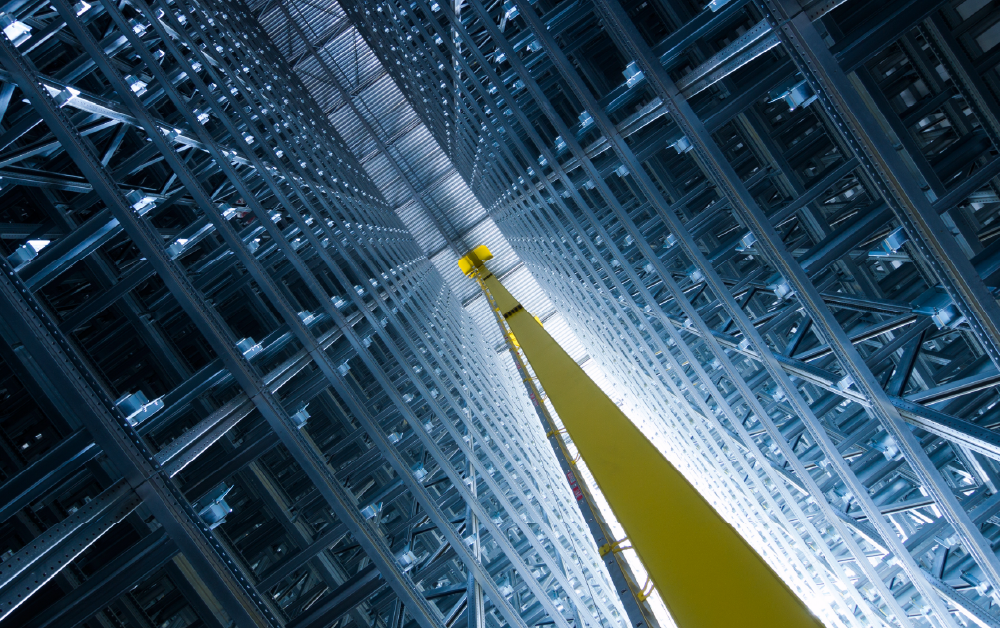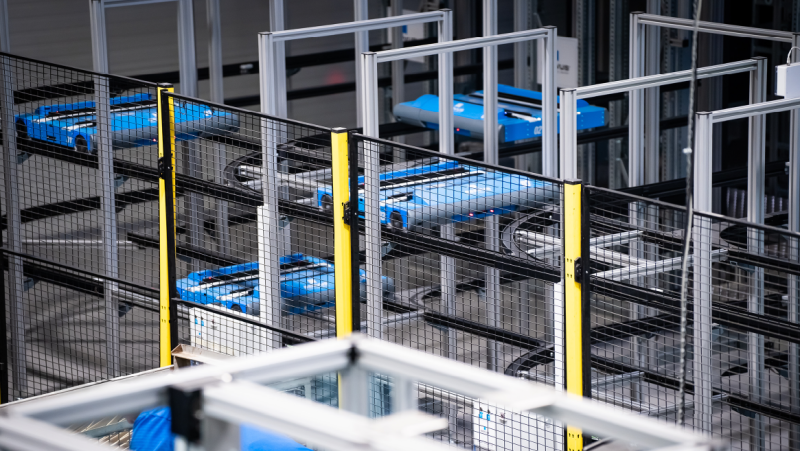Efficient in the Dark: The Dark Warehouse as the Future of Warehouse Logistics
- Automation
- Article
Warehouse logistics is always a challenge for manufacturers. The movements of a large quantity of products offer significant optimisation potential, but they also mean many potential points of failure. Fully automated warehouses, also known as ’dark warehouses’, are often seen as the ideal solution to every problem. What makes them better than regular warehouses, and what makes them different?
Warehouses have become a hot topic in the last few years in connection with supply-chain issues. That’s because they are an important safeguard when the stream of deliveries is disrupted or halted completely. At the same time, warehousing operations are increasingly difficult to expand due to labour shortage. It thus makes sense for companies to primarily utilise their employees in roles that harness their flexibility and problem-solving skills. This has led many companies to wager on the automation of repetitive tasks using autonomous guided vehicles, smart scanners and advanced AI systems that manage the flow of goods.
In these warehouses, generally “the lights are still on”, as there are people working in them. This is because people beat machines at tasks like picking loosely stored items, handling non-standard packages, or resolving unexpected issues. Heavy automation, on the other hand, is especially useful for repeated activities demanding absolute precision.
Robots don’t need light
The highest level of warehouse automation is represented by fully automated warehouse systems, often referred to as ASRS (Automated Storage and Retrieval Systems). There are no people in these halls; at most, you’ll find them working at the entrance or exit. Having humans moving about in these warehouses would even be dangerous, because the robots working in them depend on having no obstacles and being able to move at full speed. These are called “dark warehouses” because during ordinary operations, they are dark inside. Robots don’t need to have the lights on.
Dark warehouses and their benefits
These warehouses have several benefits:
- They make optimum use of the available space for handling goods and maximise storage density. This especially applies for high-bay warehouses.
- They minimise labour costs and the need for employee intervention. They run 24 hours a day, with no shift changes and no breaks. That lets employees engage in activities with greater added value.
- They increase picking quality and reduce the error rate; this also applies for precise placement into prefabricated boxes.
- They enable faster picking and transport of goods within the warehouse.
- They reduce losses of goods and improve the quality of data on stock levels. There’s less need for re-counting and re-checking, because the number of warehouse units cannot be changed without a corresponding command. Data on stock levels is thus always up to date and does not need separate verification.
- They can also reduce CO2 emissions, because optimised stacker and robotic arm movements reduce electricity consumption. Also, no electricity is needed for lighting most of the time.
Differences from traditional warehouses
To reap the benefits mentioned above, companies must first meet a few conditions. For example, the goods in the dark warehouse need to have unified packaging and only a certain number of package sizes. This is because robots have a limited number of robotic arms and cannot securely grasp arbitrarily shaped objects. So if a warehouse works with many types of goods (or to go even further, loosely stored items with neither packaging nor standardised containers and boxes), full automation may not be the ideal solution.
Also, unpredicted events must never occur in a fully automated warehouse, because there are no humans around to easily deal with such events. Therefore, every potential exceptional situation must be analysed and automated in advance for a dark warehouse. This is the greatest challenge in dark-warehouse planning. It’s one that requires expert know-how to overcome, and also one that companies often underestimate.
You need to run thorough tests for all work processes and methods (including potential non-standard situations) already during the planning and design phase in a simulated environment that faithfully represents the future logistics hall. Its digital twin must contain all its hardware and behave in precisely the same way as the dark warehouse under construction. This lets you do intensive testing even before the actual machines go into operation.
After the dark warehouse is complete, the plant must go through a several-month optimisation phase, during which individual processes need to be recorded, analysed and critically evaluated. Only with this evaluation in hand can you identify potential critical points and evaluate operations at different load levels. After all, using 85 percent of warehouse capacity creates an entirely different “traffic situation” than a load level of e.g. 15 percent.
What are the phases on the way to your own dark warehouse, and how can a digital twin help you on that journey? Find out in our article >>
Share article
Top stories from logistics, production and IT.
Subscribe to Aimtec Insights
By registering, you agree to the processing of your personal data by Aimtec as described in the Privacy policy.
Get top stories and articles
from Logistics, Production and IT.
Subscribe to Aimtec Insights
By registering, you agree to the processing of your personal data by Aimtec as described in the Privacy policy.









